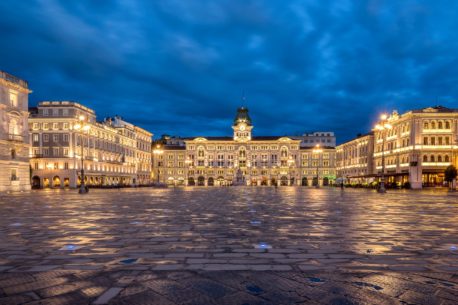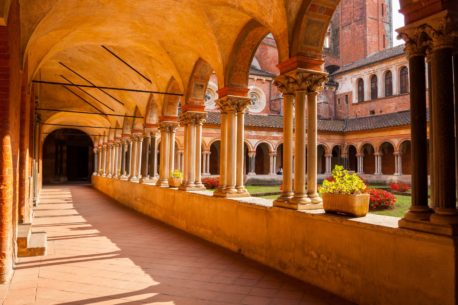
The first Jewish presence in the city dates back to 1145.
However it’s not until the 16th century that the Jewish community will reach it’s peak. In fact, in this century a grand total of 12 synagogues were built. They were called “scholae”, and they served both as places of worship as well as “schools”, and would be currently referred to as “yeshivot”. All 12 of them were destroyed in 1630 during the Mantua sacking by the Lansquenets ordered by Emperor Ferdinand II. Of these, 6 were later rebuilt in the ghetto area, among which the Grand Synagogue which was demolished in 1940 and whose only reminiscence today is the street were it used to stand bearing its name.
Nevertheless, the landmarks left by Jewish presence in Mantua are definetively worth a visit. This can start from the “Rotonda di San Lorenzo”, an impressive romanic church built in the 11th century which, since time immemorial, was deconsecrated. One of its old entrance gates was used as gateway to access the ghetto area. The opening of this doorway at sunrise and closing at sunset was the job a Christian mantuan man called the “chiavaro” (key holder). The maze of streets and buildings of the ghetto area have changed since then because in the early 20th century most of it underwent renovation. Nevertheless, particularly charming and characteristic are the area around Via Calvi, the “casa del rabbino” (the rabbis house) with some decorations on its facade, Piazza Bertazzolo and Via Norsa where you can see several houses with small balconies with style French windows reminding us that their original dwellers were Sepharadic Jews. On one of the entrance doors, it is still possible to see the mark of a mezuzah put up there who knows how long ago. However, the main attraction remains the Norsa Torrazzo Synagogue, which is the last surviving one. As all synagogues from old ghettos, the exterior is completely anonymous and quite plain, however the sumptuous interiors are sure to amaze.

The city of Trieste, practically at the border with Slovenia, due to its geographical position, has always been and still is a melting pot of different cultures: Italian, Austro-Hungarian mittle European, and Slavic. All of these cultures have always been well represented in the local Jewish community. The first Jews who settled here arrived in […]

Vercelli is one of Piedmont’s nine provinces, the region of origin of the Italian Royal house of the Savoia. The earliest written traces of a Jewish presence in Vercelli date back to 1466. They were engaged in jobs usually allowed to Jews at that time, including money lending following a license provided by the Savoia […]